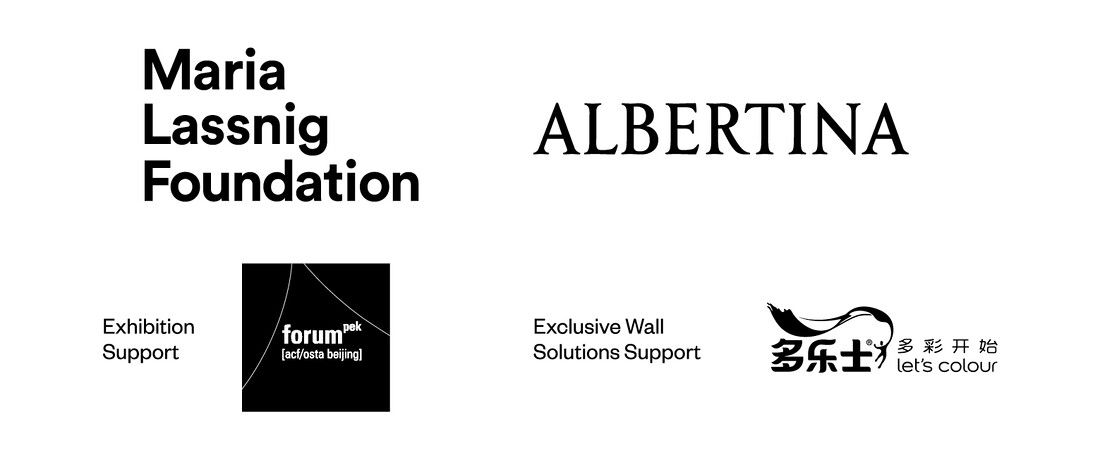Happy Martian
September 2, 2023–January 7, 2024
798 Art District
No. 4 Jiuxianqiao Road, Chaoyang District
100015 Beijing
China
Hours: Monday–Sunday 10am–7pm
T +86 10 5780 0200
From September 2, 2023 to January 7, 2024, UCCA presents Maria Lassnig: Happy Martian. The exhibition marks the first significant presentation of the work of Austrian painter Maria Lassnig (1919–2014) in China. Internationally regarded as one of the leading artists of the twentieth century, Lassnig regularly tried to paint the way her body felt, rather than how it looked. Though she lived most of her life in Austria, she spent significant periods abroad, including in Paris and New York. The exhibition features 36 paintings drawn from all periods of Lassnig’s practice along with a selection of important drawings, ranging from her early involvement with graphic abstraction to her “realist” paintings of the 1970s and her innovative late self-portraits. Organized thematically rather than chronologically, the exhibition showcases combinations of work across different decades to draw out connections in the artist’s thinking over her long career, which spanned more than seventy years. Happy Martian is curated by Peter Eleey, UCCA Curator-at-Large, and Antonia Hoerschelmann, Curator of Modern and Contemporary Art, the ALBERTINA Museum. It is organized in collaboration with the ALBERTINA Museum, Vienna, and the Maria Lassnig Foundation.
Beginning in the late 1940s, Lassnig pioneered an attentive method of self-observation that she called Body Awareness, attempting to paint the way her body felt to her from the inside. “The only true things are my own sensations,” she explained, “which transpire within the house of my body.” Lassnig studied at the Academy of Fine Arts in Vienna during World War II, after which she went home to southern Austria, where she maintained a studio until a scholarship allowed her to visit Paris in the early 1950s. She moved to Paris in 1960, but eventually decamped to New York in 1968 in search of better opportunities for women artists. She studied, lived, and worked there for more than ten years, turning toward representational figuration and experimenting with film. In 1980, she returned to Vienna to become one of the first female painting professors in a German-speaking country, and she lived there for the remainder of her life.
Happy Martian unfolds across UCCA’s New Gallery and Central Gallery. Visitors first encounter four themed rooms that look at doubles and duality in Lassnig’s practice, her use of animal subjects, and a broad sampling of her investigations into Body Awareness. The next space juxtaposes late works such as Touching the Afterlife (2000), in which she contemplated her own mortality, with key paintings from decades earlier, like the monumental superwoman of Woman Power (1979).
The seduction of Lassnig’s art derives from its stunning vulnerability. Depicting herself as a monster, machine, or alien, she left her anxieties and desires uncured and in plain view. Witnessing the dawn of space exploration, Lassnig identified with this discovery of new worlds, and she envisioned herself as an astronaut and “happy Martian” on her own interior journeys in the studio. She dedicated her work to “the description of the processes inside and outside [our]selves,” emphasizing the disjunctions between her own self-image and the way she was seen by others—as a woman, as a painter, and as a person living through dramatic technological, cultural, and political developments. By bravely exposing personal traumas, fantasies, and nightmares in her paintings, she registered how the world happened to her. The result is a catalogue of allegories for the human condition that continues to deepen in its relevance.
The exhibition is accompanied by a Chinese-English bilingual catalogue featuring essays by exhibition curators Eleey and Hoerschelmann, art historian Michio Hayashi, and art critic Fiona He. The catalogue is designed by Lynn Lai and published by Zhejiang Photographic Press.



